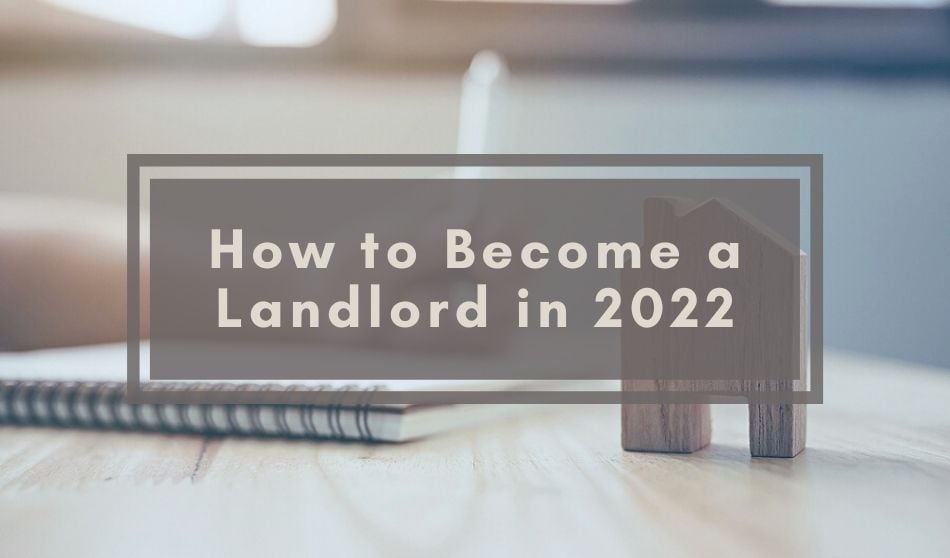If you’re considering a career change where nobody’s your boss, entering the real estate market as a landlord might be a great fit for you. However, it can be quite confusing and challenging trying to navigate the transition into a landlord. If you’d like to become a landlord in 2022, or if you’re simply just curious about how people become landlords, then follow along as we dive into some tips and methods for a budding proprietor.
What To Know Before Becoming A Landlord
You likely have a basic understanding of what becoming a landlord entails: you own a rental property, maintain the property, and people pay you so they can live in it. However, there are some important things to know and consider before you start looking to buy your first rental property.
Renter Beware
There are plenty of stories about nightmare landlords, but there are also many stories of nightmare tenants. When you’re just starting out, you’re at your most vulnerable to being taken advantage of by a tenant, even if it was unintentional. It’s vital to perform adequate tenant screening to ensure that you only accept a tenant with an excellent renter history.
Don’t Risk More Than You Can Afford To Lose
You can take all the precautions to vet your tenants before renting to them, but there can still be unexpected situations that arise. Make sure you have a financial safety net in place before beginning to rent. Having to rely on somebody else carries a lot of uncertainty with it, so it’s not advised to anticipate the income from renting to be guaranteed. This mindset has caused some landlords to run into trouble with their payments toward the loan on the property.
There have been an incredible number of stories from landlords unable to pay the loans on their property during the height of the pandemic due to the unforeseen job loss. It didn’t matter how well-vetted the tenants were, the unexpected situation of the pandemic caused unavoidable obstacles.
Enlist The Help Of Professionals Of The Field
New landlords can be taken advantage of or make errors simply due to lack of knowledge of the ins and outs of the rental industry. The best thing that you can do to protect yourself, in the beginning, is to hire professionals that have already been in the field to help you out.
The two most important professionals would be a lawyer to draft up rental contracts, and a property management company to help with facilitating leases, payments, and performing background checks.
Learn more: 10 Reasons You Need to Hire a Property Manager
Make Room In Your Schedule
If you decide to be a DIY landlord and avoid hiring a property management team, remember that being a landlord is a profession, and as such, it will require that a good deal of your time. Your time will not just be spent on physically managing the place, but it will also be spent on advertising, giving walk-throughs, shopping around for businesses to perform specialized maintenance, and more. Property management software can be a helpful tool to make those extra daily tasks more efficient. A cloud-based property management software can give you access to essential industry-specific tools such as a tenant portal that allows your tenants to log in to and make maintenance requests and pay their rent. You can even utilize built-in tenant screening that connects your online rental applications to instant tenant screening reports. This can cut back on some of the headaches associated with being a landlord. Regardless, the time investment is especially taxing when you’re just starting out since there will be a lot that you’re unfamiliar with until you’ve become accustomed. It may take a few years before you’re able to relax and actually feel like your rental is generating passive income.
Learn more: Do I Need Property Management Software?
Where Should You Start
Still interested in becoming a landlord? The first thing to do is to figure out how you’re going to be purchasing a rental property.
There are a number of options available, and while it’s entirely doable to purchase a property outright with cash, it’s more likely that you’ll be taking out a loan on the property.
These are three of the most popular loans:
- Non-Owner-Occupied Mortgage: This type of mortgage is pretty self-explanatory in that it’s a mortgage on a property that would not be your primary residence. This type of mortgage has higher interest rates, shorter repayment terms, and higher down-payment requirements than a standard mortgage.
- Home Equity Loan: This loan is a great option for a second property if you already have a primary residence. Taking a loan out against your current residence will give you lower interest rates and more lenient repayment terms.
- Federal Housing Administration Loans: Also known as an FHA loan, these are great for anyone that is looking to become a landlord, but don’t have their own residence yet. These loans are strictly for a property that you’re going to make your primary residence, however, these loans are allowed to be used on properties that have up to four units, provided that you will be living in one of the units for at least 1 year.
Once you have an idea about how you would like to go about financing the property, it’s time to actually acquire the asset. Knowing how you plan to finance your venture will also show you your price range.
Find Your Rental Property
As the old adage of real estate goes, it’s all about location, location, and location. The placement of your rental can easily make your experience renting it out much easier, or much more difficult. There are a few things to take into account when trying to find the best-placed building to purchase:
- Centrality – It’s important to know how far the property is from modern luxuries; luxuries such as the central point of businesses in the area, the distance from highway access, as well as the proximity to schools and shopping centers.
- Type of Neighborhood – While mostly a preference, it’s one that should be considered ahead of time. Basically, this just means you should consider the demographics of the area and if that’s who you want to rent to (i.e. is it a college town, a predominantly retired community, young professionals, etc.)
- Median Income – This lets you know what the average resident is able to afford, but keep in mind that this also means that half the incomes in the area are above the median and below it. The average rent of the area should also be considered.
- Local Amenities – This refers to what places are within walking distance, places such as parks, gyms, public transportation, and restaurants/cafes. Although this might not be a selling point to everyone, it’s absolutely a selling point to some. You can use resources such as walk score to help simplify finding that answer.
While it’s unlikely that you’ll find a place that checks all of your boxes, hopefully, you’ll be able to find one that checks most of them. Once you find that property, it’s time for you to take the leap into becoming a landlord; buying your property.
Owning A Rental
The actual process to acquire your rental is very similar to buying a primary residence. The only true differences exist in the financing method (and that you don’t intend to move in immediately upon purchase).
After purchasing your rental property, the next steps involve getting the property in shape for tenants. This same work will occur after every tenant during turnover. The only difference is that the first time is likely to be a bit more work, depending on how rent-ready the property is currently.
Here are a few steps to lead you toward your first tenants:
- Start scheduling for maintenance and vendors (for example, plumbers and locksmiths) to make necessary alterations to the property as soon as you close on it.
- Begin advertising your property to attract tenants. You can get some of the background screening out of the way while your vendors are making alterations to the place.
- Give the place a final inspection after your vendors have finished. You need to make sure that everything was done to your satisfaction and it’s a good idea to double-check so you don’t forget to clean anything, or if any unknown issues arose during the alterations.
- Finally, meet with the new prospective tenants and give them a showing of the place as well as a copy of the lease.
- Celebrate! Once you have your tenants sign the lease, you are officially a landlord.
Takeaways
Now that you’re a landlord, you’ll have to ensure that your tenants are happy and satisfied with the property and your maintenance of it. Happy tenants mean longer tenants and better word-of-mouth advertising for you, ultimately limiting the time you’ll spend dealing with tenant turnover for future rentals. As time goes on, it’s important to keep track of all the expenses accrued in the maintenance and upkeep of your property so that you can adjust your price accordingly for future leasing terms.







I am always looking for new ways to make money and one of the best things about renting out apartment rentals is that it’s passive income. I love reading blogs like yours because they are informative with great tips on how top do so! Keep up all your hard work in writing helpful articles like this one- hopefully others will find them as useful as I did.
Thanks for the kind feedback, Shawn. Glad you found our blog helpful.